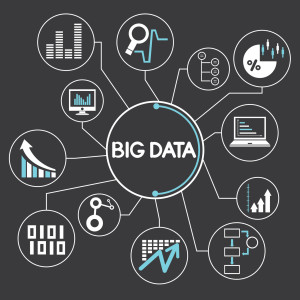While business intelligence and all of the critical information that it provides your organization is primarily best-served by your decision makers, its value should be felt company-wide. Some departments aren’ t even aware that big data is being collected on their efforts, and thus, when conversations regarding BI strategies are brought up, they fail to recognize its true impact.
Sure, your data analysts or independent BI team will be at the forefront of obtaining, displaying and breaking down what all those numbers mean, but the real question is — does your team even care?
They should. If implemented correctly, your BI tools should help make your company run smoother and more efficiently. Knowledge is power and arming your entire organization of its value will not only bring your team closer together, but may also bring about changes from new perspectives that were once previously left out.
In this post, we’ll detail some of the important aspects of business intelligence that every level of your organization should be aware of and why.
 The Strength of Big Data
The Strength of Big Data
Money makes the world go round, but what helps companies generate consistent business? Customer service, marketing and partnering with like-minded companies all serve this purpose. However, big data enables managers to precisely carve out an efficient budget that enables all of these factors to work collaboratively.
What some team members may overlook is the fact that it’s not just the access to data the matters. Too much data can sometimes be just as time-consuming and inefficient as not having enough information at your fingertips. The true value is the capability of analyzing the data that business intelligence tools provide. These tools provide the information that shapes several things including budgets, which projects to tackle, when to tackle them and even salaries. From the warehouse to the shipping department to the front office, BI works behind the scenes to put the entire organization in context and make it easier for team members on the front lines.
Doing Work On the Go
The future of business technology as a whole is leaning towards having the ubiquitous capability of conducting business while being mobile. As many decision makers are more often traveling outside the office, this capability suits them very well. And the same goes for some of the employees, too.
If your organization is on the rise and is expanding in size, the role of “decision maker” will likely also extend to more players. And that’s a good thing since BI tools are catering to this need. Being able to conduct the same amount of productivity while spending less time spent behind the desk and more time in the field is an extremely attractive feature that wouldn’t be possible without the innovations in BI and big data.
 Reporting Made Easier with BI
Reporting Made Easier with BI
Generating reports for higher-level executives can be a stressful task for employees as it likely entails crunching numbers, making sense of them and explaining their significance. BI tools allow these employees to simplify the process without having to request the assistance of an IT specialist — taking time away from both parties.
Depending on your current BI software, the convenient, user-friendly makeup of the BI interface should be formatted easy enough to provide the high-quality data that’s needed without it being too difficult to manage.
Building a Closer Organization
All in all, the progress in the business intelligence community is bridging the gap between entry-level employees, managers and executives. The value of these connective tools offer a company openness that may have never been able to exist in past generations and its value cannot be underestimated.
The innovations aim to simplify the way work is done, offer more real-time information, grant employees more chances to work on-the-go and allow teamwork to be maximized. While all employes may not use your BI tools, their knowledge of the technology can at least help them understand that the statistics that come to their desks are based in high-quality tools that have been in development for several years.













